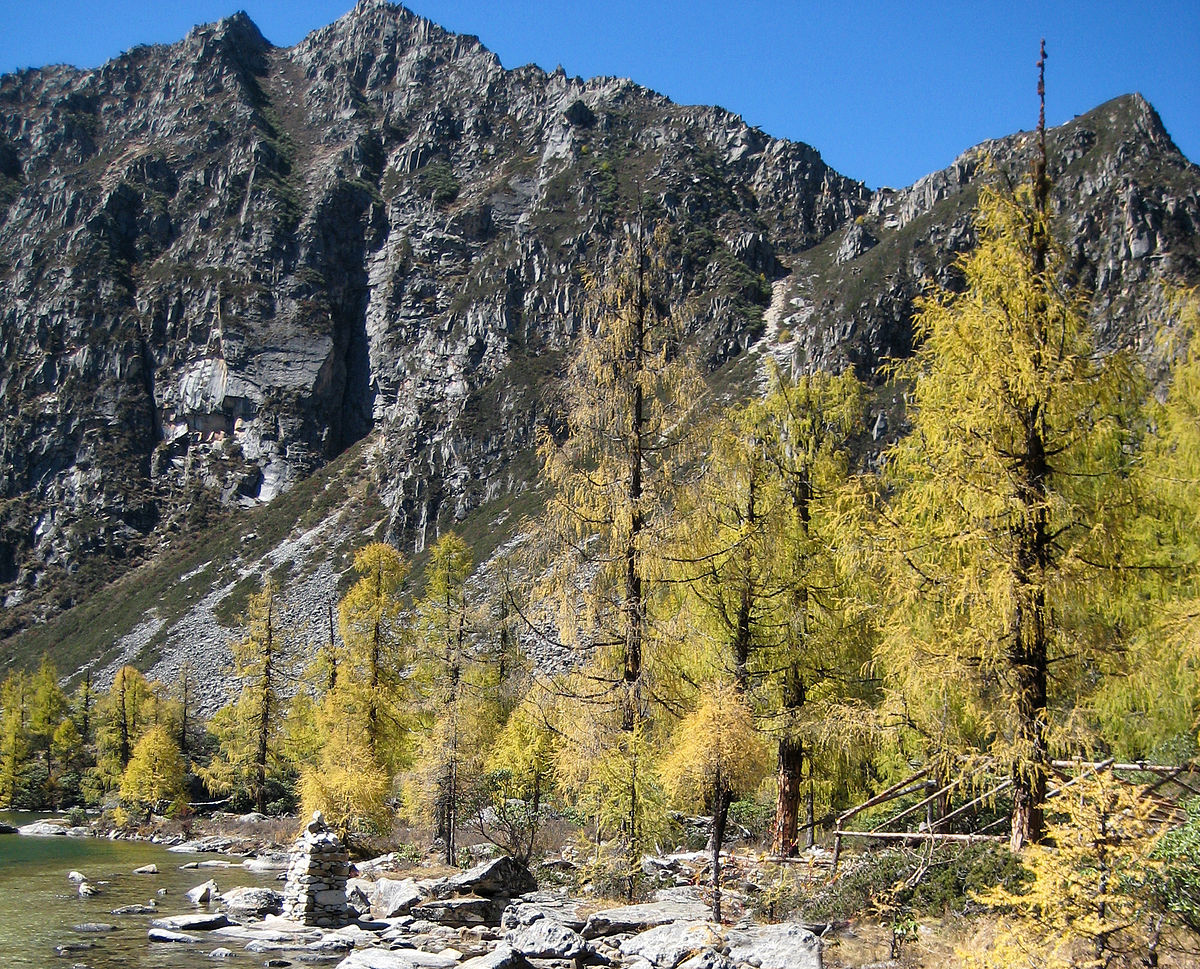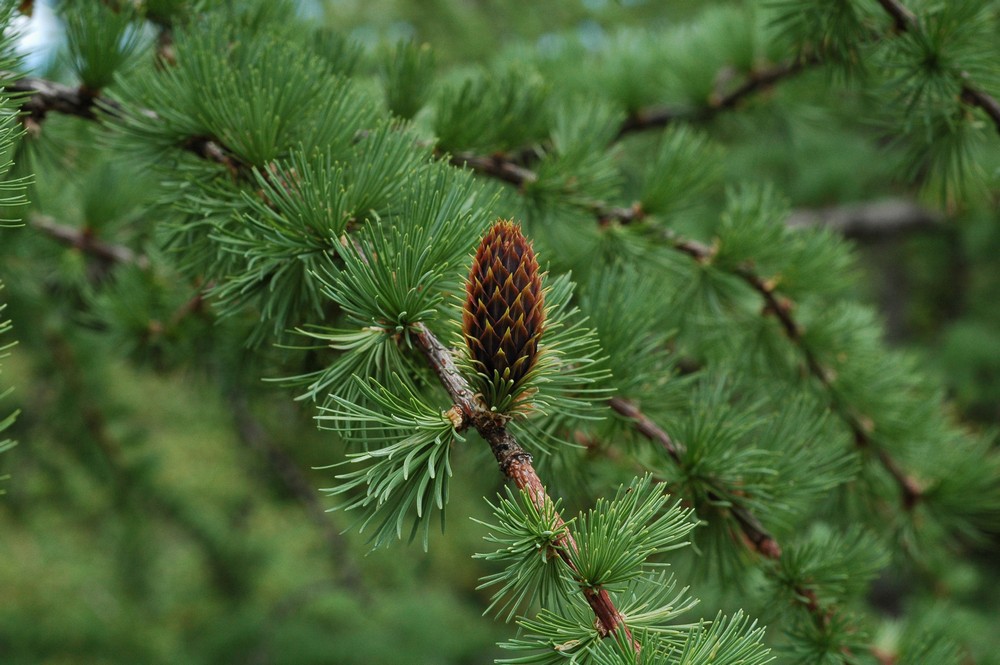Larix potaninii, first described in 1894 by Alexander Theodorowicz Batalin (1847-1896), is commonly known as Chinese larch, as well as çº¢æ‰ (hong shan), literally red fir, in the Chinese language. The species name honors Grigorii N. Potanin (1835 - 1920), a Russian botanist and explorer of eastern Siberia, Mongolia, and China who in 1893 collected the type specimen near Kangding (formerly Tatsienlu) in China's western Sichuan province, the region from which most later material has been collected.
There are four recognized specific varieties based on geography, and differences in shoot color and seed cone structure.
- Larix potaninii var. potaninii, the typical variety which is fully described on this page. It is native to China's Gansu, southern Shaanxi, western Sichuan, northwestern Uunnan and eastern Xizang (Tibetan) provinces. Seed cones are 1 to 2.2 inches (2.5 - 5.5 cm) long and 0.6 to 1.2 inches (1.5 - 3 cm) wide when open holding 35 to 65 seed scales.
- Larix potaninii var. chinensis, the Shaanxi larch, is known only in central China's Shaanxi province. Seed cones are 1 to 2 inches (2.5 - 5 cm) long and 0.6 to 1.12 inches (1.5 to 2.8 cm) wide with striped seed scales on the underside aspect. Short shoots bear yellow pubescence.
- Larix potaninii var. himalaica, the Langtang larch, is native to China's Xizang provence (Tibet) and Nepal's Langtang Khola. Seed cones are up to 2.6 inches (6.5 cm) long with mucronate-cuspidate bracts. Young shoots are yellowish orange in color.
- Larix potaninii var. macrocarpa, the Big-cone Chinese larch, is native to to China'™s southwestern Sichuan and northwestern Yunnan provinces. Seed cones are 2 to 3.2 inches (5 to 8 cm) long, exceptionally to 3.6 inches (9 cm), and (2.5 - 3.5 cm) wide with 50 to 80 seed scales.
Description. Chinese larch is a deciduous, coniferous species of tree that grows to heights of 150 feet (50 m) tall with a trunk that measures 40 inchs (100 cm) in diameter, measured at breast height with a conical crown.
- Bark is gray or gray-brown in color, smooth when young, becoming rough and longitudinally fissured on old trees.
- Branches are short, growing horizontally. Long shoots are slender and pendant, red-brown or purple-brown in color, glabrous or very slightly hairy, turning gray in color after after their first year. Short shoots are 0.12 to 0.32 inch (3 - 8 mm) in diameter, densely covered with yellow-brown hairs at the apex. Winter buds are brown or dark brown in color, resinous, glossy, and ovoid in shape.
- Leaves are 0.48 to 1.4 inches (12 - 35 mm) long and 0.04 to 0.06 inch (1 - 1.5 mm) wide, prominently keeled on both sides so as to seem 4-sided, with a pointed apex.
- Seed cones are cylindrical to ovoid in shape, 1 to 3 inches (2.5 - 7.5 cm) long and 1 to 1.4 inches (1.5 - 3.5 cm) wide at maturity, red or purple when young, maturing a deep purple, changing to light gray-brown at maturity. They attach to the branch without a stalk or stem. Each cone will have 35 to 90 seed scales , slightly convex in shape, 0.32 to 0.64 inch (0.8 - 1.6 cm) long and 0.32 to 0.44 inch (0.8 - 1.1 cm) wide , with an obtuse or sometimes notched apex. Bracts are often exerted, purple-brown in color, and oblong-lanceolate in shape.
- Seeds are light brown in color with purple spots, obliquely obovoid in shape, seed body is about 0.12 inch (3 mm) long with a 0.24 inch (6 mm) wing. Pollination takes place from April to May, and seed maturity is in October.
Distribution. This species is native to Nepal; eastern and southern Tibet; and China: southern Gansu, southern Shaanxi, western Sichuan, and northwestern Yunnan provinces, growing at elevations of 7,500 to 13,800 feet (2,350 to 4,300 m) above sea level, on acidic podzol soils, where climate is cold, and annual precipitation ranges from 32 to 80 inches (800 to 2,000 mm). Associated trees are mainly conifers including species of
Abies, Picea, Tsuga, Juniperus, Cephalotaxus and
Taxus.
